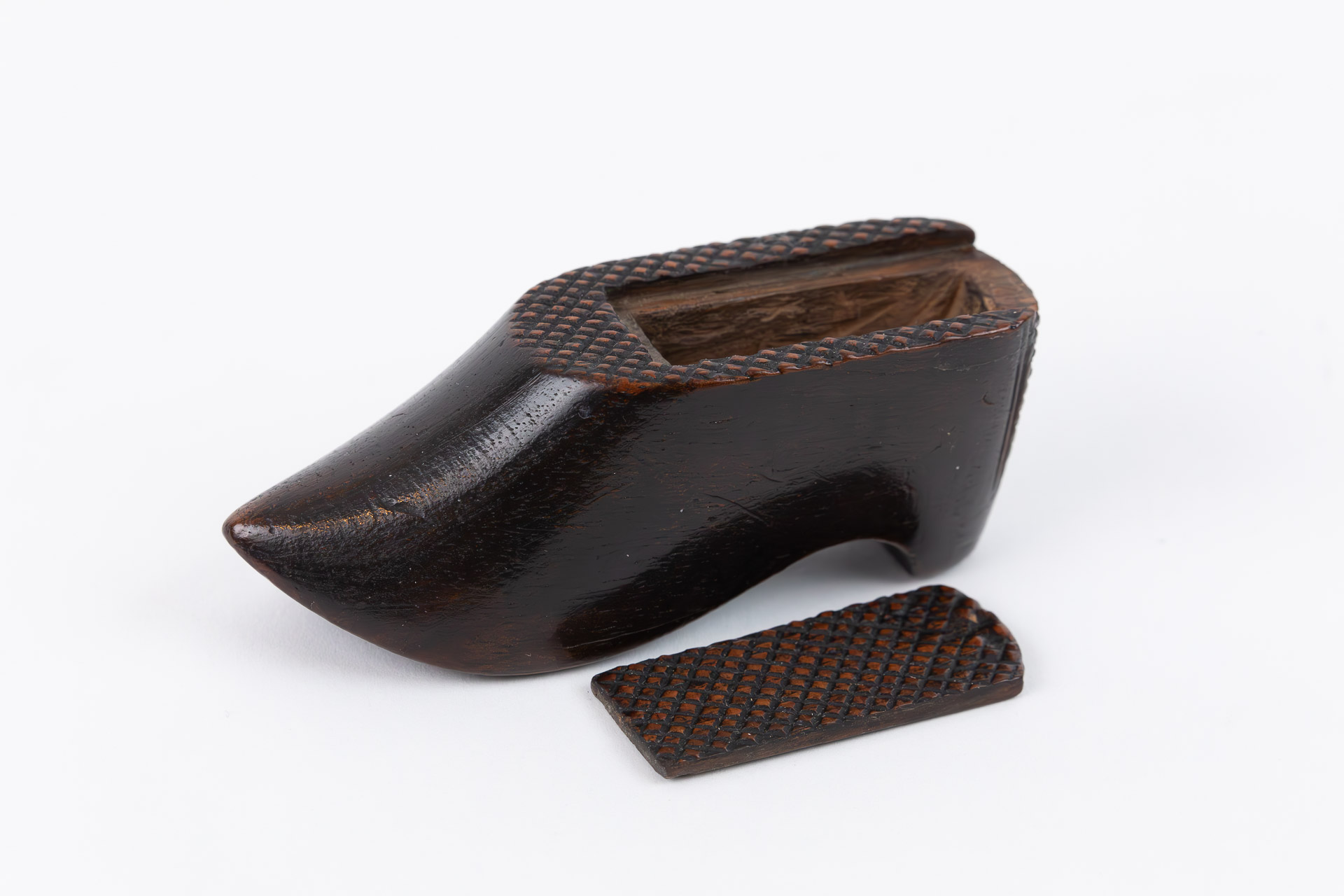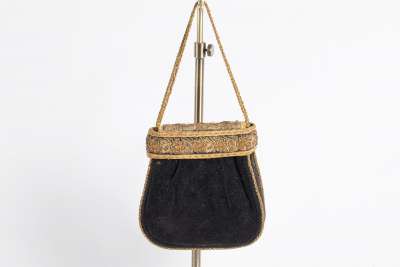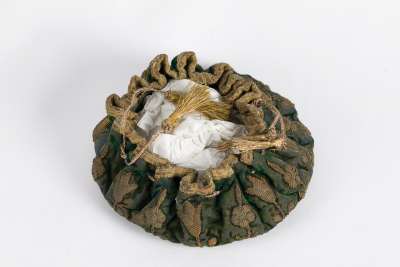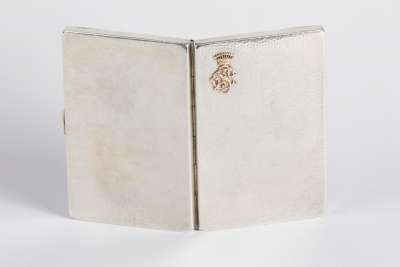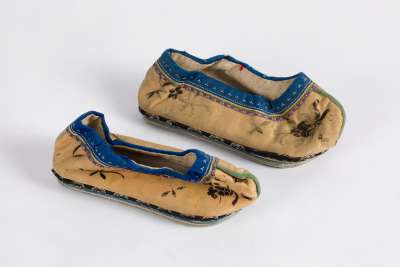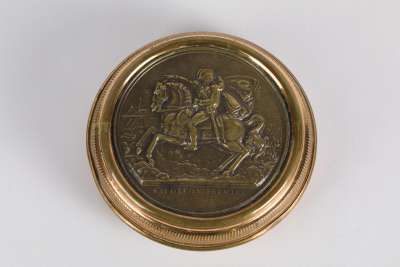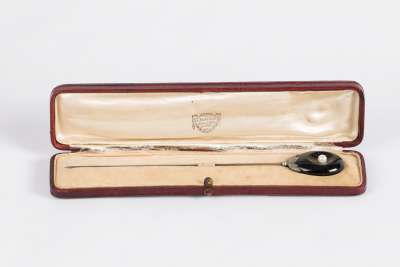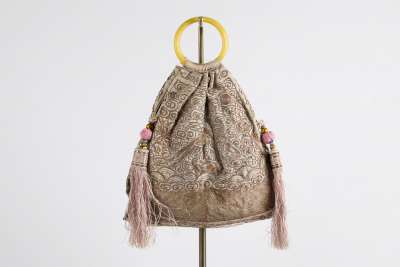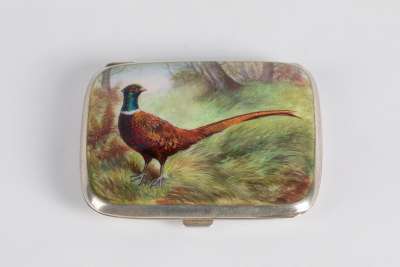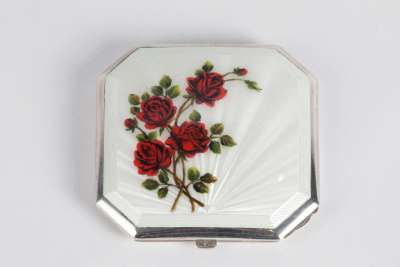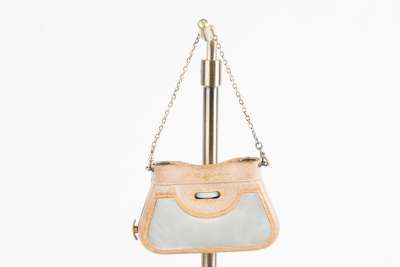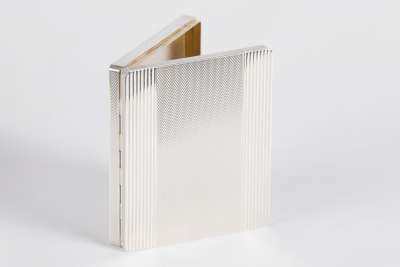The Treen Snuff Box is a quintessential example of British craftsmanship from the mid-19th century, fashioned in the whimsical shape of a shoe. Crafted circa 1850, this charming piece displays a keen attention to detail, evident in its intricate carving and the presence of an initialed cartouche on the sole. The material, known as 'treen', refers to small wooden objects made from a single piece of timber, showcasing the artisan's skill in woodturning and carving. Its origins in the United Kingdom during this period highlight the popularity of such personal items, used for holding powdered tobacco, or snuff.
Condition Report
This Treen Snuff Box is in good condition, reflecting wear consistent with its age and historical use. The surface exhibits a patina that adds to its historical charm, typical of wooden objects from this era. While the cartouche's initials remain visible, they are slightly worn, a testament to its past usage. The overall structure is sound, with no visible cracks, ensuring it retains its functional integrity. Its preserved state makes it a valuable acquisition for collectors seeking authentic 19th-century artefacts with a story to tell.
Dimensions
Weight: 30gm, Length: 8cm, Width: 2.5cm, Height: 2.5cm.
A Personal Companion for Snuff
The original purpose of this Treen Snuff Box was as a personal, portable container for snuff, a finely ground tobacco that was popular among the gentry in the 18th and 19th centuries. Its shoe shape, a common motif of the time, might have been chosen for its novelty and ease of carrying. Such boxes were often carried in pockets or bags and used as a discreet way to indulge in the habit. The presence of an initialed cartouche suggests it may have been a personalised item, possibly a gift or a treasured personal belonging.
Victorian Whimsy and Craftsmanship
This Treen Snuff Box is an emblem of Victorian whimsy, reflecting the era's fascination with novelty items that combined function with imaginative design. The shoe form is not only aesthetically engaging but also indicative of a playful approach to everyday objects. During this period, treenware was highly prized for its practicality and the skilled craftsmanship required to produce such intricate pieces. This snuff box is a fine representation of the Victorian era's penchant for combining utilitarian items with artistic expression.
The Craft of Treen
The creation of this snuff box involved the meticulous craft of treen, which required the artisan to expertly carve and shape the wood into a functional yet decorative item. The shoe design would have been carefully executed by hand, with the initialed cartouche added as a final touch of personalisation. The choice of wood and the skill in carving ensured the piece's durability and appeal. Such boxes were often made from fruitwoods, known for their fine grain and polish, enhancing the tactile and visual qualities of the item.
Artisans of the Victorian Era
The maker of this Treen Snuff Box, though unknown, would have been part of a long tradition of skilled artisans working in the United Kingdom during the Victorian period. These craftsmen were adept at turning everyday objects into works of art, often working in small workshops or as part of larger manufacturing enterprises. The initialed cartouche suggests that this snuff box may have been a bespoke item, crafted to meet the specific desires of its owner or as a commissioned piece, reflecting the high level of customisation available at the time.
Collected by Enthusiasts of Victorian Novelty
Collectors of Victorian novelty items are often drawn to pieces like this Treen Snuff Box for their unique blend of function and creativity. Such objects offer insight into the social and cultural dynamics of the era, where personal items were both practical and expressive. The shoe-shaped snuff box appeals to those interested in the history of personal accessories and the evolution of treenware. Its enduring charm and historical significance make it a noteworthy addition to any collection of 19th-century antiques, particularly for those with an affinity for British craftsmanship and Victorian ingenuity.

